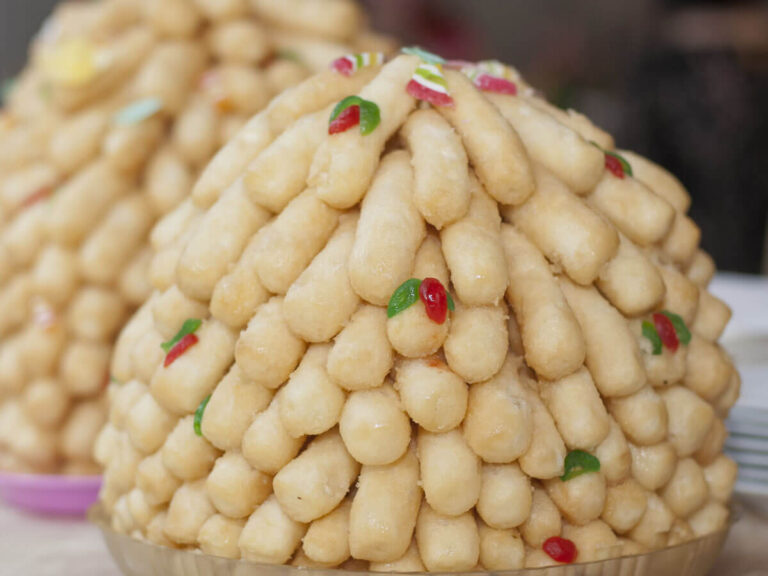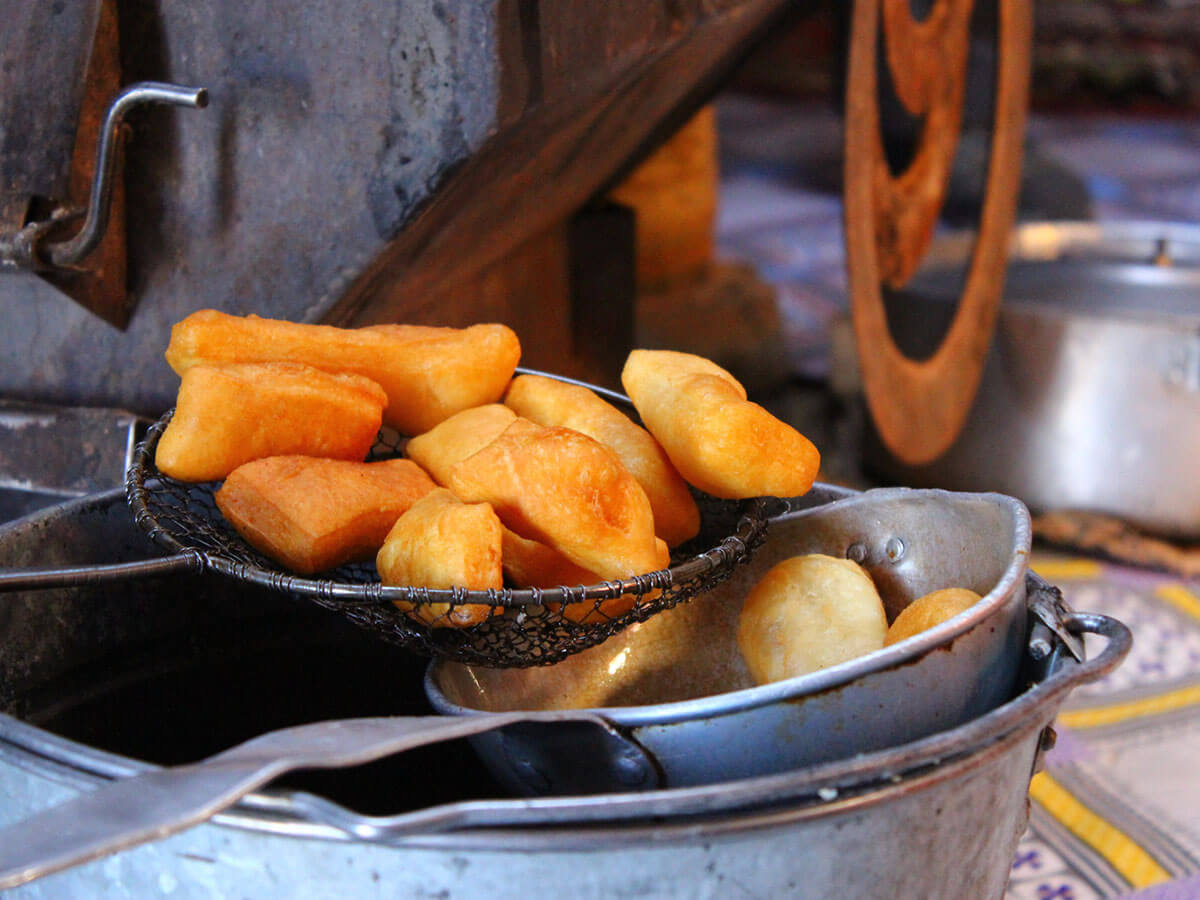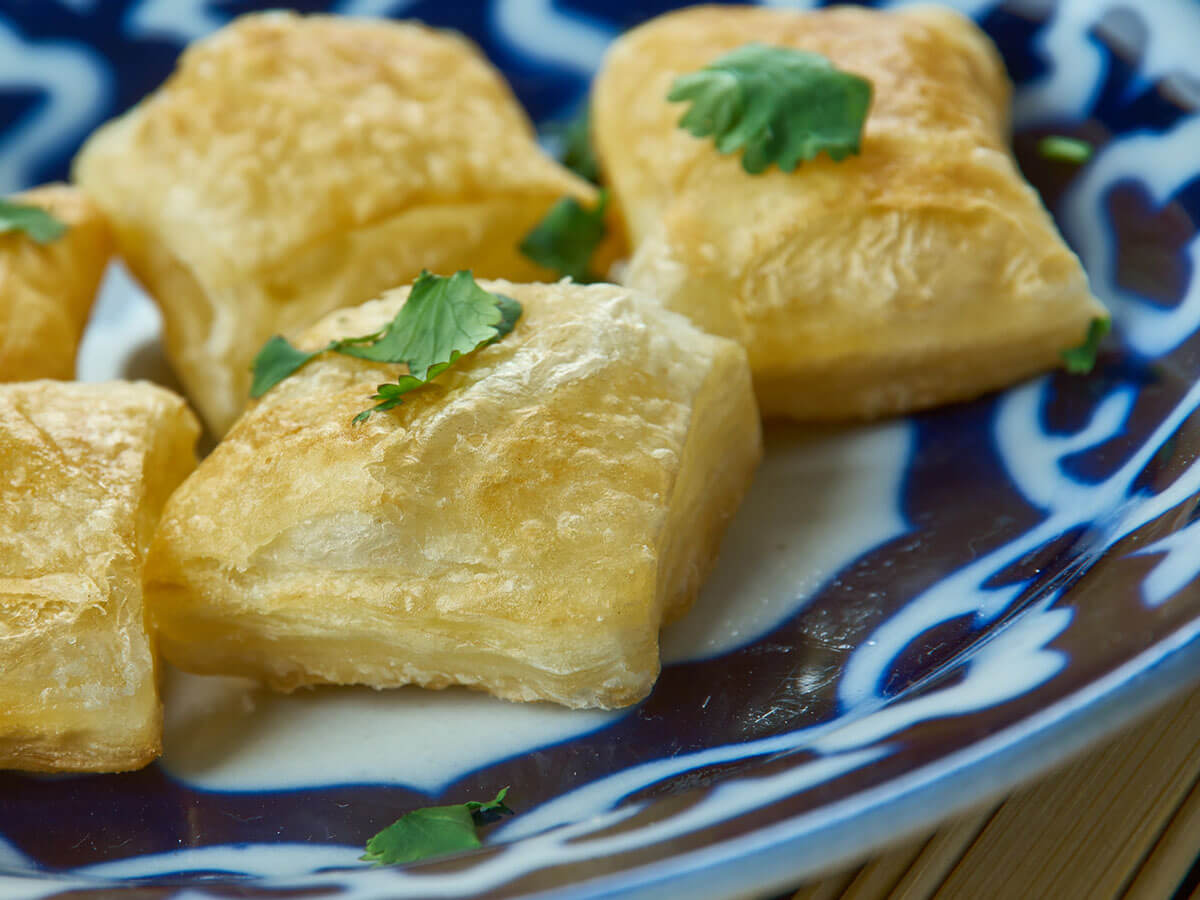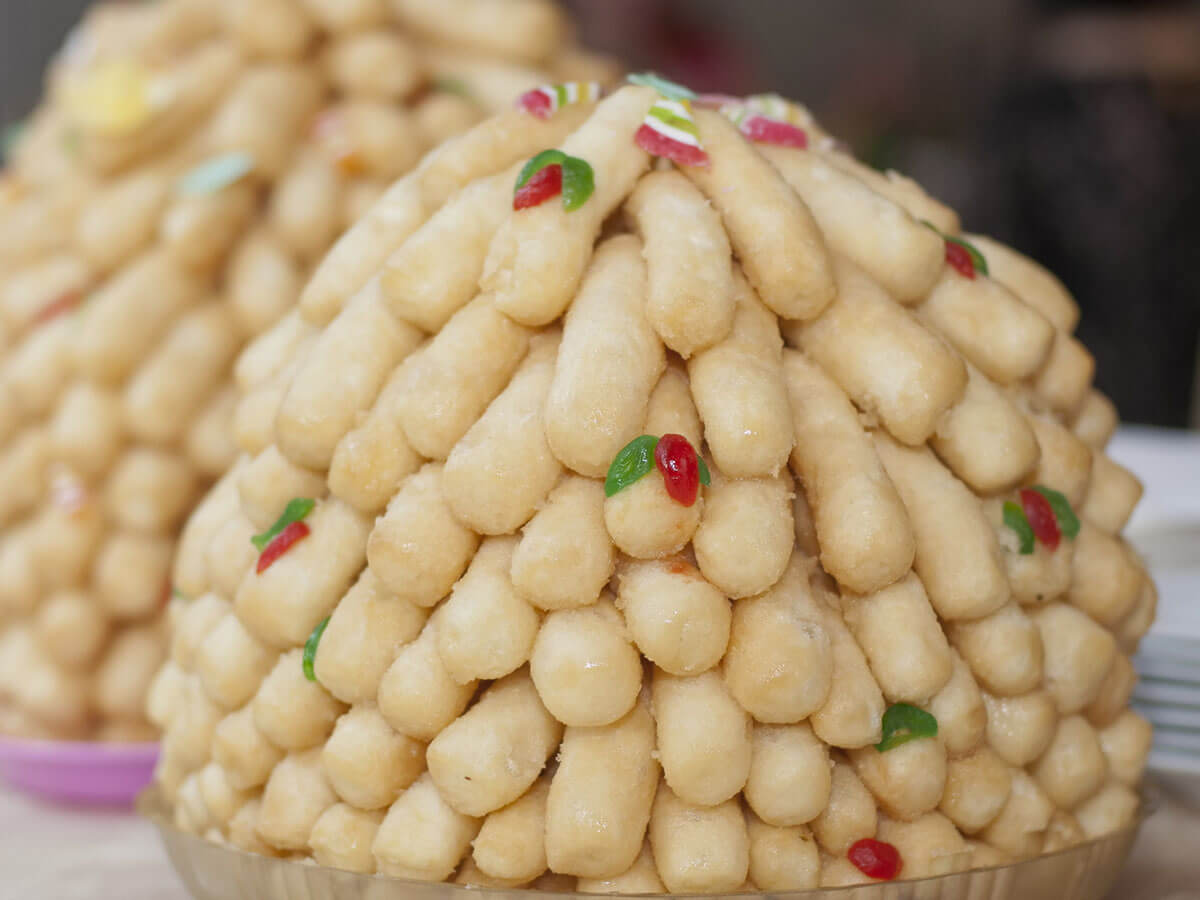Boortsog: Basic Information
Pronunciation
/bawrt-sog/
Alternative Name(s)
Dish Type
Course
Mealtime
Popular Variations
Boortsog: Ingredients and Preparation
Main Ingredients
Main Cooking Method
Preparation Process
Boortsog: A Deep Dive
Cultural Significance
Taste
Texture
Aroma
Color
Serving Style
Serving Temperature
Accompaniment
Occasions
Seasons
Special Diets
Calories
Popularity
Popular Similar Dishes
- Uštipci
- Çäkçäk
- Lokma
- Youtiao
Popular Dining Area
Boortsog is a famous fried dough dessert originating from Mongolia and various countries in Central Asia. It is also found in other cuisines, such as Turkey in the Middle East and Russia.
Boortsog shares some similarities with doughnuts, being made from a yeasted dough with milk, butter, and eggs. However, boortsog comes in spherical or triangular shapes and is sometimes decorated with pretty patterns.
Due to its texture and taste, many people consider boortsog a type of cookie or biscuit. When paired with jam, powdered sugar, honey, or syrup, the fried dough dessert is a finger-licking treat for any occasion. Boortsog is also a wonderful street food.
Central Asians usually serve boortsog with sorba (rich soups or stews, also known as chorba) or tea. In Mongolia, locals often dip the fried dough in tea.
Pishme is a well-known boortsog variation in Turkmenistan.
Read on to discover fascinating information about boortsog, like its history, how people in different countries prepare it, its pros and cons, and similar fried dough foods.
Key Points
Boortsog Images
What Is the Origin of Boortsog?
Boortsog has its roots in the nomadic culture of Mongolia and Central Asia. The fried dough food is easy to carry and consume on the move, making it a must-have treat for nomadic clans.
Over time, boortsog was introduced to many countries with inhabitants of Central Asian descent, giving rise to many ways of preparing boortsog.
How Is Boortsog Prepared?
Traditionally, people make boortsog by mixing a yeasted dough from flour, salted water, sugar, and butter, cutting the dough into many small pieces, and deep-frying them in oil until crispy.
Extra ingredients or substitutes are sometimes added, depending on the region. Eggs are a popular add-on in most places.
Mongolian boortsog is fried in mutton fat instead of oil, whereas people in Central Asia usually add kaymak, a type of clotted cream.
In Mongolia, people usually bend and knot boortsog into other shapes rather than just spheres and triangles. Meanwhile, Tajiks decorate their variations with a criss-cross pattern.
In Turkmenistan, locals customarily serve pishme to guests as a gesture of hospitality.
As boortsog has many things in common with doughnuts, it also shares the pros and cons of the deep-fried dessert.
Pros and Cons Of Eating Boortsog
Here are some major pros and cons of eating boortsog.
Pros
Cons
After learning about those facts, turn to common questions about boortsog to complete your understanding of the deep-fried dessert.














Adam Sam
Senior Food and Drink Editor
Expertise
Food Writer & Recipe Developer, Recipe Tester, Bartender, Cooking-video Maker, Editor In Chief
Education
Adam Sam, an experienced food writer and recipe developer, is passionate about blending diverse culinary traditions, national dishes, and innovative beverages, showcasing his proficiency in both traditional and modern recipe testing.
As the Editor-in-Chief, he elevates culinary content from street food to fine dining, focusing on Western cuisine and types of drinks at azcuisines.com, and is professional in creating engaging cooking videos that simplify complex dishes and ingredients.
His passion for food is evident in his writing, where he uniquely merges various cultures, traditions, and contemporary trends, skillfully combining classic recipes with modern cooking methods.